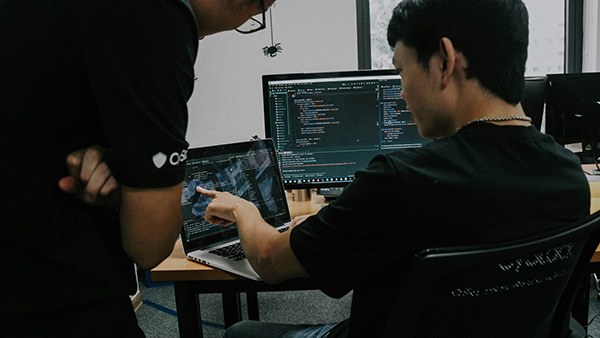SMB manufacturers face rising cyber risks, with ransomware and supply chain attacks driving urgent need for stronger defenses.
By Brian Hildebrand, Chief Information Officer, ECI Software Solutions
As the cybersecurity landscape continues to grow more complex, small and mid-sized manufacturers increasingly find themselves navigating unique challenges. Unfortunately, vulnerabilities are everywhere. A host of traits can amplify risk, including limited resources and slowing rates of technology adoption. The continuous evolution of cyber threats creates an environment that cybercriminals can capitalize on.
While large corporations often have dedicated security teams and built out infrastructures, smaller manufacturers may lack the same level of resources to pour into defense. Though on the surface it may seem like smaller businesses are less of a target, recent reports indicate that’s not the case, “46% of all cyber breaches impact businesses with fewer than 1,000 employees.” For smaller manufacturers, this risk may hit closer to home, considering manufacturing has been the most targeted sector for cyberattacks three years in a row. It now accounts for 25.7% of attacks, with ransomware involved in 71% of these incidents according to the World Economic Forum.
Put simply, cybercriminals are driven by revenue, much as businesses are. Success in cybercrime often comes with larger windows of opportunity, targeting unpatched vulnerabilities that may come with legacy systems used in manufacturing. Key areas of exposure for manufacturers include outdated software, insufficient network segmentation, unmonitored access points, and unsecured IoT devices on factory floors. Each weak point opens the door to an attack.
Digital transformation doesn’t equate to full immunity from risk. As manufacturers integrate technology into their operations, so too do cybercriminals. Levels of risk intensify with cybercrime evolution, exploiting weaknesses with increasingly sophisticated attacks. As attacks change quickly, manufacturers must stay informed on the latest trends to protect their business and ensure resilience in an increasingly digital world.

Ransomware is a growing threat to small and mid-sized manufacturers, with cybercriminals increasingly targeting these businesses by encrypting critical data and demanding payment for its release. Recent research finds that 65% of manufacturing and production organizations reported a ransomware attack; a notable rise from the previous two years and a 41% increase since 2020.
When cybercriminals steal access to design files from a small metal fabrication business, for example, production is halted, creating costly downtime. Without those files, operations become stuck, delaying delivery timelines and potentially damaging client relationships. With a lack of IT security infrastructure, quick response to attacks or preventative defenses are major difficulties. A lack of preparedness not only increases vulnerability but also heightens the financial and operational risks.
Supply chain woes are nothing new to manufacturers. However, they also provide an area for cyber risk. Cybercriminals are increasingly exploiting vulnerabilities in the supply chain, taking advantage of the interconnected nature of manufacturing operations.
Many manufacturers rely heavily on third-party vendors to run their business, providing elements like software, parts, and services. While each of these is useful, they are also additional entry points for attacks. If a supplier’s system is compromised by malware, it can spread to the entire network, disrupting production and jeopardizing sensitive data. While attack numbers appear to be easing, there is significant room for frequency deflation given that 91% of organizations faced a software supply chain attack last year.
The difficulty here is that manufacturers often have limited visibility into the security practices of their suppliers, making it challenging to identify or mitigate these risks. This lack of control over third-party security leaves many manufacturers exposed to potential breaches that originate outside their own operations. A trusted partner with strong cybersecurity can help mitigate this risk. Moving business-critical systems (ERP, HRM, etc.) to the cloud offloads the burden of a good backup strategy to the cloud provider. This proactive approach safeguards your operations and provides peace of mind.
Many small and mid-sized manufacturers face significant challenges related to both cybersecurity awareness and limited budgets, which can leave them vulnerable to attacks. A lack of employee awareness about cybersecurity best practices often leads to accidental breaches, as workers may unknowingly fall victim to phishing attacks or mishandle sensitive data. As AI enables phishing and spam to move quicker, it can become easier to fall victim to a malicious email link, inadvertently compromising valuable company information. Many smaller manufacturers cannot afford regular cybersecurity training programs, leaving their staff less prepared to recognize and respond to threats.
Compounding this issue is the often-limited budget allocated to cybersecurity. Cybersecurity can be viewed as a cost rather than a necessity, resulting in underfunded and underdeveloped security measures. Balancing cybersecurity needs with other operational priorities can be difficult, frequently leading to gaps that cybercriminals can exploit. This lack of proactive investment creates a dangerous situation where manufacturers are always playing catch-up.
Small and mid-sized manufacturers face a rapidly evolving cyber threat landscape with unique challenges, including outdated systems, limited budgets, and insufficient awareness. These factors make them attractive targets for cybercriminals and are all the more reason for tailored strategies that employ defense in depth, while balancing the practical realities of these businesses.

About the Author:
As Chief Information Officer, Brian Hildebrand is responsible for developing and implementing ECI’s comprehensive IT strategy, overseeing the organization’s entire technology infrastructure, and ensuring that ECI’s IT infrastructure remains at the forefront of innovation. Brian’s 20+ years of experience in disaster recovery, high-availability systems, and acquisition integration continues to enhance ECI’s reliability, security, and scalability.
From tradition to transformation Sequoia Brass & Copper has stood for excellence in American manufacturing. In this episode, we sit down with Kim MacFarlane, President of Sequoia Brass & Copper, to hear the inspiring story of a family-owned company founded by her father, built on craftsmanship, trust, and a relentless commitment to quality. Kim shares how she’s guided the company through the challenges of modern industry while honoring its heritage, and how the next chapter will be carried forward by her son Kyle. This is more than a story of brass and copper; it’s about resilience, innovation, and the enduring strength of family legacy. If you’ve ever wondered how tradition can meet the demands of today’s industry hit play and be inspired.